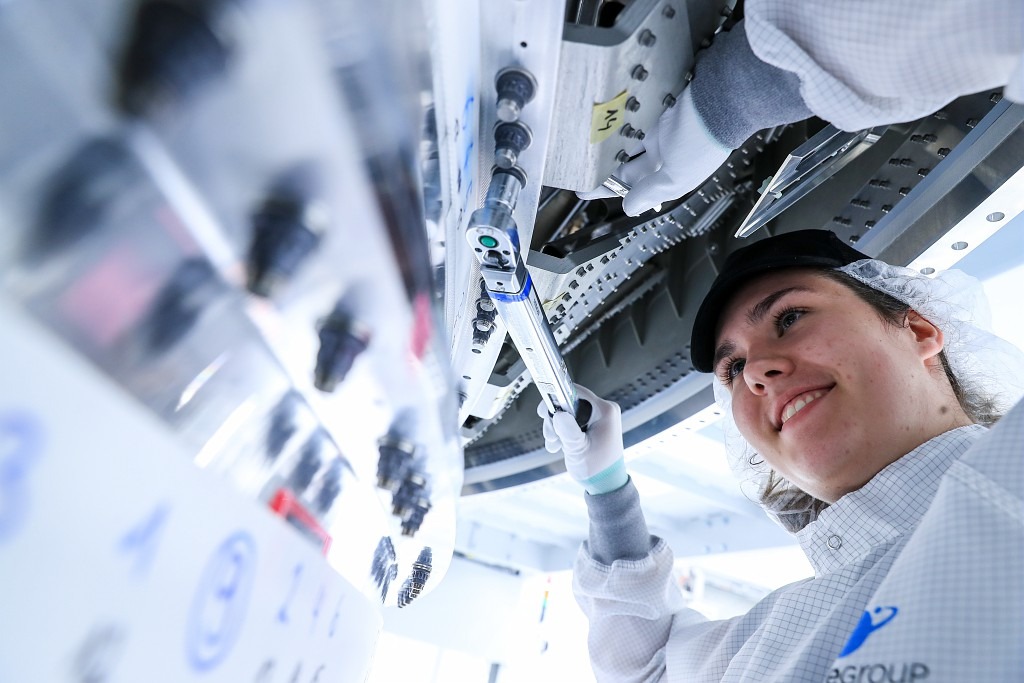How do you build Ariane 6 rockets?
03.09.2023
You won’t be surprised to learn that building a rocket is very complex and technical. For the new Ariane 6 rocket, ArianeGroup has changed its manufacturing processes by building new factories and using new technologies like 3D printing.

What’s the difference between Ariane 5 and Ariane 6?
A new rocket means innovations and Ariane 6 is jam-packed with innovations. The first, which you can spot instantly, is that the rocket can now use two or four boosters. The boosters are those gigantic cylinders filled with powder that all the flames and ‘smoke’ come out of on lift-off. As they are bigger and more powerful than before, Ariane 6 will be able to carry more satellites than Ariane 5 and heavier ones. But that’s not all! The engine in its upper stage is so sophisticated that it can ignite and re-ignite four times. And this makes a big difference. Ariane 6 is like a bus that stops four times to drop the satellites off at different places, rather than leaving them all at the terminus to make their own way home…
Where are the rockets built?
First, you need to know that we don’t build rockets from start to finish in just one big factory. We build our rockets in several different factories around Europe, and each one is specialized in making different parts. There is one in Bremen, in Germany, for example, where we build the upper stage we just mentioned. The Vinci engine that powers this stage is produced in Vernon, in France, with parts that come from Ottobrunn in Germany. We also have the factory at Les Mureaux, near Paris in France, which is specialised in the rocket’s core stage. Thanks to the Vulcain engine manufactured in Vernon, and with the help of the boosters, it enables Ariane 6 to break through the Earth’s gravity pull and travel into space. A single core stage takes about six months to build, but to go quickly, we have created five different stands. As the stage is gradually built, it goes from stand to stand until it leaves the factory. This method means that we can build several stages at the same time. The stage then joins all the other parts that have come from all over Europe and, together, they are shipped to Kourou, in French Guiana, on Canopée (we’ll come back to this boat later…). After arriving in Kourou, the rocket takes about 12 days to be assembled. And then it’s ready for lift-off to head for the stars.

New technologies
Remember we said earlier that our factories are really high-tech? They are so modern that even the manufacturing tools are all connected to detect the slightest problem. But one of the new developments you’ll like best is 3D printing. With 3D printing, we can make custom parts very fast, and some are very big. For Ariane 6, one 3D-printed part can replace several that we used to produce with our old methods. This is one of ArianeGroup’s innovative ideas to make rockets less expensive to build.
Now you know (almost) everything about how we build our rockets!